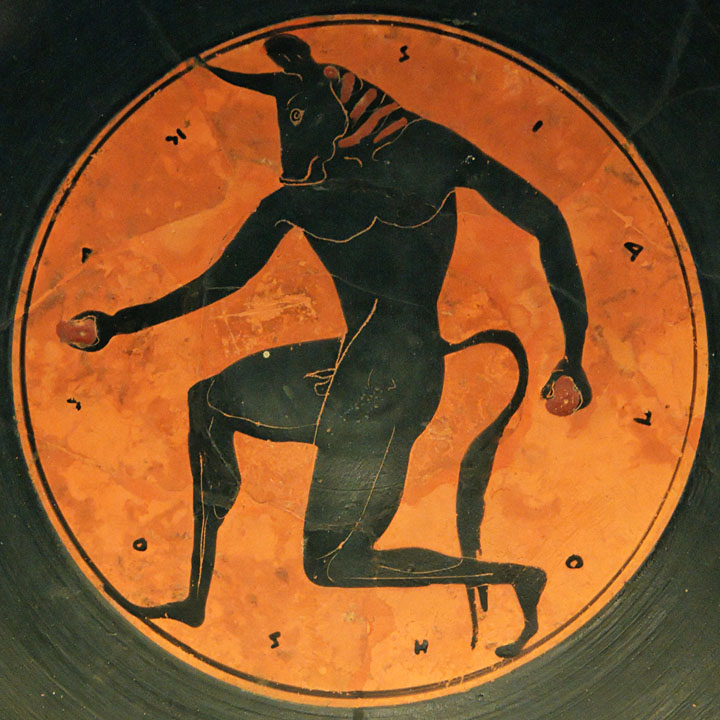The Minotaur
The National Archaeological Museum of Spain, located in Madrid, has one of my favourite ancient depictions of the Minotaur. It is found on the inside of an Attic red-figure cup dated to ca. 515 BC. Here’s a picture of it taken, once again, from Wikimedia Commons:

There are letters around the edge. If you start just a little before the Minotaur’s left foot and then read in an anti-clockwise direction, you will be able to make out the ancient Greek phrase, ho pais kalos, which translates to ‘the boy [is] beautiful’. Such cups were used in symposia where they might have played a role in pederastic relationships between an older man and his younger lover.
The combination of this inscription and the depiction of the Minotaur strikes me as a bit tongue-in-cheek. If you recall the summary of the story of Theseus, Minos, the king of Knossos, demanded a tribute from Athens that consisted of young men and women, who would be sent into the labyrinth where they would be killed and eaten by the Minotaur.
Because of the inscription, the depiction of the Minotaur might have an erotic meaning, with the older man perhaps suggesting he was metaphorically going to devour his young lover, or that their sexual intercourse would be ‘beastly’ in some fashion.
By the way, the Minotaur is depicted holding rocks in his hands. The inclusion of these rocks might serve to underscore the fact that the creature is violent (compare, for example, Perseus fighting the sea-monster by throwing rocks at it). Alternatively, the rocks could also be interpreted as some kind of double entendre. I’ll leave it up to you to reach your own conclusions.

